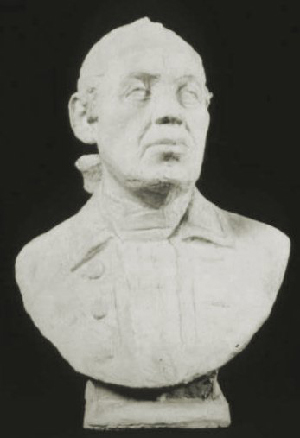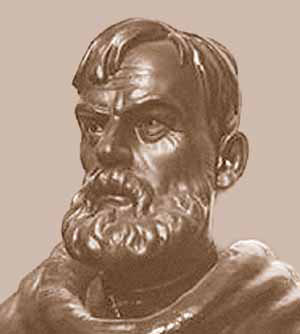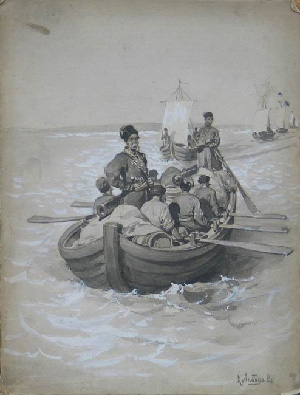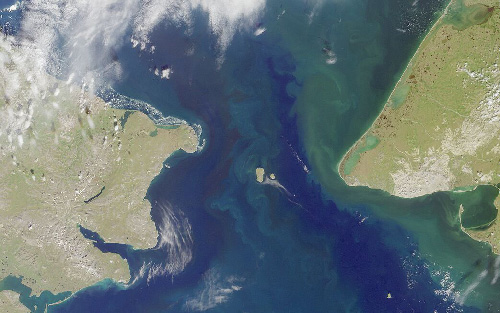
Vitus Bering Discovered Alaska, or did he? Some evidence points toward an earlier Russian explorerBy DAVE KIFFERJuly 16, 2015
Some historians believe that Sir Francis Drake visited the Alaska coast a century and a half before Bering (see "Did Sir Francis Drake visit Southeast Alaska? “ SITNEWS, Nov. 11, 2013). While he never reached the mainland of Alaska (neither did Bering), he was the first person to navigate what later became the Bering Sea and he did land on the Diomede Islands, some 80 years before Bering sailed the Bering Strait and nearly 100 years before Bering first spotted Alaska. “For eight years he served in Tobol’sk and Yeniseisk (becoming a Cossack),” Black wrote in her 2004 definitive account “Russians in Alaska, 1732-1867.” Black even surmises that Dezhnev was part of the Cossack detachment that founded Yakutsk in 1632. He participated in several explorations that pushed the formal Russian border eastward in Sibera as far as the Kolyma River. Several attempts were made by various Russian explorers to determine the farthest reaches of the continent in the 1630s and 1640s. In 1647, Dezhnez was part of an expedition that attempted round the Chukchi Peninsula by sea but was stopped by sea ice. In 1648, he was part of a much larger expedition to try again and to also determine where the continent ended.
A total of seven ships, ships specially designed to sail in icy waters called kochs, with a total contingent of at least 89 men and possibly as many as 121, set sail. Disaster befell much of the fleet. All but one of the kochs either shipwrecked or completely disappeared. “Except for Dezhnev, none of the organizers and leaders of the expedition survived to tell their tale,” Black wrote. “He rounded the northeast extremity of Asia, made landfall at the Diomede Islands, sailed through the Bering Strait, (and) reached the mouth of the Anadyr River.” The Anadyr River is across the Bering Sea from St. Lawrence Island. So why is Dezhnev not considered the discoverer of Alaska? Why is there not a Dezhnev Strait, a Dezhnev Land Bridge, a Dezhnev Glacier? For one thing, he was barely literate and the “report” of his voyage languished in Russian files in Yakutsk for many decades, while Bering’s voyages took credit for the discovery of the strait that separated Asia and North America and later for the “discovery” of the Alaskan mainland. Also, among those who knew about Dezhnev’s voyage, there was significant controversy. When several other explorers attempted to replicate the same journey, they were stopped by sea ice. According to Russian historian I.M. Belov, numerous attempts were made and none were successful. It wasn’t until nearly two centuries later that a successful voyage from northern Russia was made around the edge of the continent and down to Sakhalin Island.
Many explorers in the Russian Far East doubted that Dezhnev had completed the voyage he claimed. At the same time, an overland route from the Kolmya River to the Anadyr was pioneered and trade commenced over that route rather than Dezhnev’s sea route. Also clouding the issue of Dezhnev’s voyage was a persistent folk belief in Siberia decades after his voyage that at least two ships in Dezhnev’s fleet had gone so far off course that they had landed in the New World and had formed Russian settlements before being absorbed into the broader Inupiat culture. “The possibility of an early seventeenth century Russian settlement on Alaska by shipwrecked mariners is nowadays not debated in public,” Lydia T. Black wrote. (Russians in Alaska, 1732-1867 By Lydia Black - University of Alaska Press - Black was named Alaska Historian of the Year in 2004 for Russians in Alaska, 1732-1867.) “Some archeologists, historians and anthropologists privately believe there were such settlements, or at least concede such a possibility but in America none has stated such beliefs in print. On the other hand, L.M. Sverdlov, a Russian arctic geographer, believes such an event did take place.” Black noted that Sverdlov has taken part in several expeditions to Alaska to try to find evidence of such a settlement, primarily in the Seward Peninsula near Nome and Kotzebue. The controversy over whether a “great land” to the east had been “discovered” clouded even more judgment against Dezhnev’s accomplishment. It wasn’t until Bering’s second voyage that general Russian opinion moved toward the acceptance of the new land. In writing her account, Black had access to thousands of Russian historical documents. In her book, she notes that the historical record is highly contradictory and, at the remove of nearly four centuries, nearly impossible to deconstruct. Meanwhile, content to have survived his voyage after 64 of the 89 voyagers did not, Dezhnev apparently spent most of the rest of his life focused on commercial efforts rather than exploration.
Satellite image of Bering Strait: Cape Dezhnyov, the easternmost cape in Siberia, Russia is on the left; Seward Peninsula, Alaska, USA in on the right.... Exploiting a walrus rookery near the mouth of the Anadyr, Dezhnev collected nearly two tons of walrus ivory. By 1659 he began a slow return to Western Russia, carrying a large amount of “tribute” goods received from the Natives in eastern Siberia. After stopping several times along the way, he arrived in Moscow with more than 47,000 rubles worth of goods. In those days the average yearly salary of a Russian soldier amounted to about 5 rubles, according to several sources. Dezhnev died in Moscow in 1672. Although his name is not well known in the West, Dezhnev belatedly received recognition in the 20th Century in the Soviet Union and Russia. The easternmost cape in Siberia, the one that he rounded on his 1648 voyage, is now known as Cape Dezhnev. The Soviet Union and Russia have also named a series of ice breakers after Semyon Ivanovich Dezhnev.
Related:
On the Web:
Contact Dave at dave@sitnews.us
Publish A Letter in SitNews Read Letters/Opinions
|
|||||



